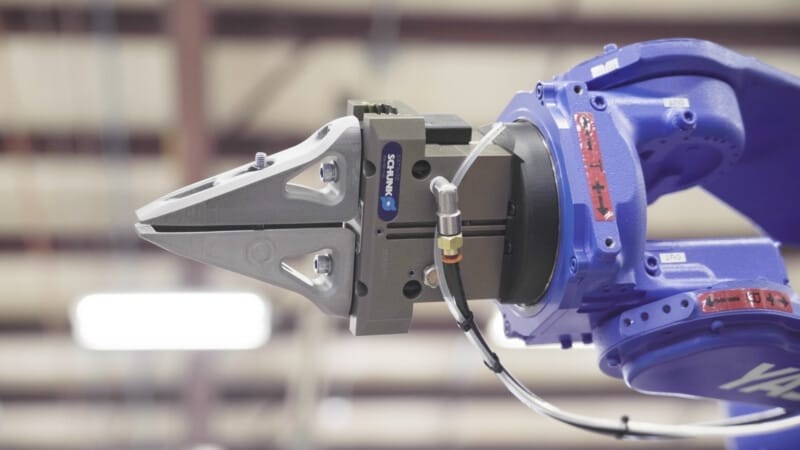
Inconel vs Stainless Steel
When manufacturing a new part, one important question is what metal to use. Although the choice can be easy, such as selecting a plain carbon steel because it’s cheap, other applications may not have such clear cut answers. When deciding on a material to use and a method to produce that part, a few questions need to be answered:
1. What are the conditions this part is going to be in?
2. What kind of strength do I need?
3. What price point do I need this part to be at?
If a part needs to have superior strength and corrosion resistance at high temperatures, Inconel alloys are best. On the other hand, a part for handling medical supplies may be better suited for an alloy of stainless steel. The rest of this post documents what kind of other applications you can use for these two metals.
Inconel
Inconels are a class of nickel-chrome-based super alloys characterized by high corrosion resistance, oxidation resistance, strength at high temperatures, and creep resistance. Inconel is able to withstand elevated temperatures and extremely corrosive environments due to two factors.
First, the intermetallic compound Ni3Nb is formed in the gamma double prime (ɣ’’) phase. This intermetallic phase acts as a ‘glue’ on the grain boundaries. This ‘glue’ prevents the grains from increasing in size when heated to high temperatures (for the most part, smaller grains means a high strength and larger grains lends itself to a higher ductility). Second, Inconel has a high corrosion resistance due to the passivation layer that forms when heated. Both of these factors make Inconel ideal alloys for applications from hot section gas turbines to deep sea well drilling. So what is the downside of these alloys? They are expensive, hard to machine, and hard to work.

Stainless Steel
Stainless steels are characterized by a chromium content higher than 10.5% by weight. There are five classes of stainless steels:
- Austenitic
- Ferritic
- Martensitic
- Duplex
- Precipitation Hardenable
These stainless steels are named after the microstructure that forms in those alloys. Duplex stainless steel is a mix of austenitic and ferritic microstructures, and precipitation hardening means that precipitates can form to increase the strength of those class of stainless steels. The strength and the corrosion resistance of the stainless steel is dependent on these microstructures. For example, austenitic stainless steels are going to be the most ductile class of stainless steel, but also the most corrosion resistant. On the other hand, the martensitic class has typically much higher strength, but less corrosion resistance. Austenitic stainless steels have a larger more equiaxed grain structure which is what gives it these properties compared to the smaller lathe structure found in martensitic stainless steels.
All stainless steels have a higher corrosion resistance than traditional steels and can be found in everything from kitchen cutlery and structural building applications to biomedical and food preparation applications.

Inconel vs Stainless Steel: What’s the Difference?
For one thing, Inconel is much more expensive than stainless steel alloys. Inconel also has much better corrosion resistance and strength at high temperatures. However, at lower temperatures, steels like 17-4PH stainless will have a higher strength than Inconel. When deciding between the two different alloys, the main deciding factor is cost, temperature, and strength. If a lower cost, but relatively strong part is required, stainless steel is probably the way to go. If an air-critical component is required with high temperature needs, then Inconel is a much better alloy for that application.
Why 3D Print Inconel or Stainless Steel?
Since Inconel is very expensive and hard to machine, it can be much easier to 3D print. 3D printing decreases the amount of waste material, lowers labor and tooling costs, and decreases lead time, which in turn can decrease the cost of the part. Stainless steel, on the other hand, depends a lot on the application, current cost of the part and machinability. 3D printing both Inconel and stainless steel with the Markforged Metal X is a great solution for many applications including those in the oil and gas industry with our Inconel 625 material or replacing legacy parts with our 17-4 PH Stainless Steel. 3D printing these parts can reduce cost, material waste, and lead time which is important in high-cost alloys like Inconel 625 or lead time reduction with impossible legacy parts.
All of the blogs and the information contained within those blogs are copyright by Markforged, Inc. and may not be copied, modified, or adopted in any way without our written permission. Our blogs may contain our service marks or trademarks, as well as of those our affiliates. Your use of our blogs does not constitute any right or license for you to use our service marks or trademarks without our prior permission. Markforged Information provided in our blogs should not be considered professional advice. We are under no obligation to update or revise blogs based on new information, subsequent events, or otherwise.
Never miss an article
Subscribe to get new Markforged content in your inbox
